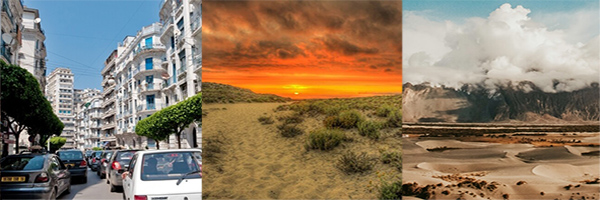Algeria – Sands of the Sahara
Algeria is a land of contrasts, and that is reflected in the geography of the country itself. Most of Algeria’s population lives on the Mediterranean coast or within a few miles of it. This fertile, temperate region is actually at more northerly latitude than the southernmost point of Spain. To the south, across the dry plateaus and low mountains of the Saharan Atlas, is the great expanse of the Sahara desert.
The Sahara occupies a huge area of northern Africa approximately the size of the continental United States. When most people think of the Sahara, they imagine blistering sun and an undulating sea of sand dunes stretching as far as the eye can see. The reality is somewhat different, however. Only about a quarter of the Sahara desert is made up of sand dunes. This is not to say that the remainder of the desert is hospitable – it’s not. Ancient mountain ranges and highlands spread across the Sahara, and their eroded debris and detritus covers extensive plains dotted with fertile oases. There are no rivers in the Sahara today, but springs bubble up from underground aquifers to support date palms and other tropical vegetation.
These isolated oases are all that remains of a once flourishing ecosystem that supported crocodiles, hippos and human societies. We know this from the elaborate rock paintings left by ancient peoples who raised crops and livestock as far back as 10,000 years ago when the Sahara was a much wetter place. At locations such as Tassili n’Ajjer in southeastern Algeria, these petroglyphs show that rivers once flowed where today no surface water can be found. Photographs taken from space reveal the courses of meandering rivers that once watered what today is dry and desiccated desert. Even so, humanity still thrives in the Sahara. Over 2 million people make the desert their home, and they have evolved a lifestyle that allows them to sustain themselves in one of the Earth’s most unforgiving environments.
